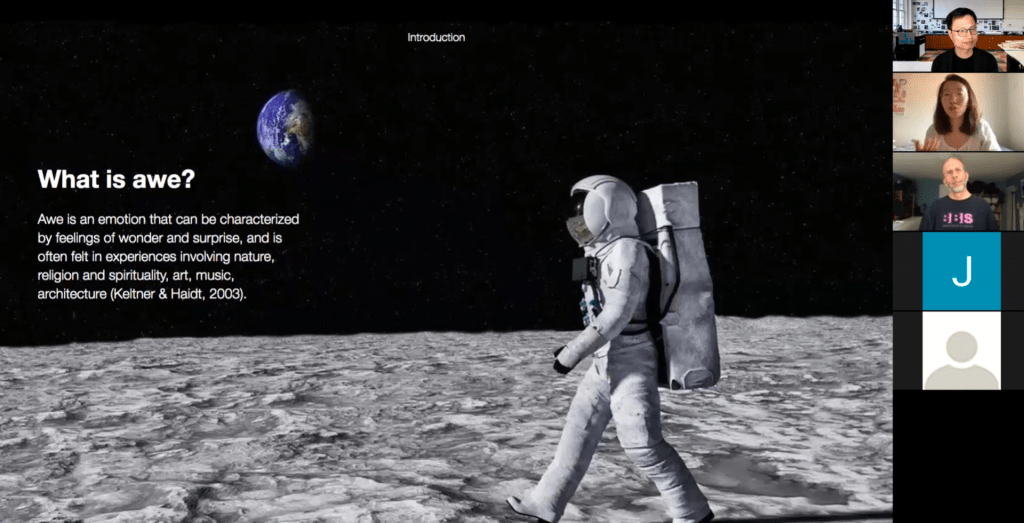
On June 5, 2020, Jialin Ke, BS successfully defended her honors thesis entitled “Design for breathtaking experiences: An exploration of design strategies to evoke awe in human-product interactions.” The thesis was supervised by Dr. Jay Yoon of Design+Environmental Analysis and Dr. Michael Goldstein of Psychology.
Abstract
From looking up at a tall skyscraper, to the vast depths of the Grand Canyon, or even learning about the extensive network, you may have experienced awe in one way or another. Awe is experienced when one encounters something that is greater or more powerful than her/himself and is known to be associated with prosocial behavior through a diminishment of self-importance. In design research, most of the studies on awe have been conducted in lab conditions, by using technologies such as Virtual Reality because of its efficiency to simulate typical awe-stimulating conditions (e.g., nature scenes). While useful in inducing awe and assessing its effects on users, they gave very little guidance as to how the experiences of awe can be deliberately evoked through design. Most attempts tend to focus on the response of awe instead of its underlying eliciting conditions (i.e., mechanism), which is illustrated by the fact that many studies on awe utilized nature imagery. With a proposition that it can be advantageous for designers to understand when and how awe can be facilitated in human-product interactions, this thesis explores design strategies to evoke awe through an exploratory top-down-bottom-up approach. Based on appraisal theory, a theoretical overview of the underlying conditions of awe was formulated (i.e., top-down), based on which its relevance to designing for awe was investigated. The conditions that underlie awe in the domain of design were empirically explored by means of a survey in which participants reported over 150 awe examples and experiences (i.e., bottom-up). These examples were analyzed, resulting in six design strategies to evoke awe. The thesis describes these design strategies with design examples and discusses their implications for the design practice.